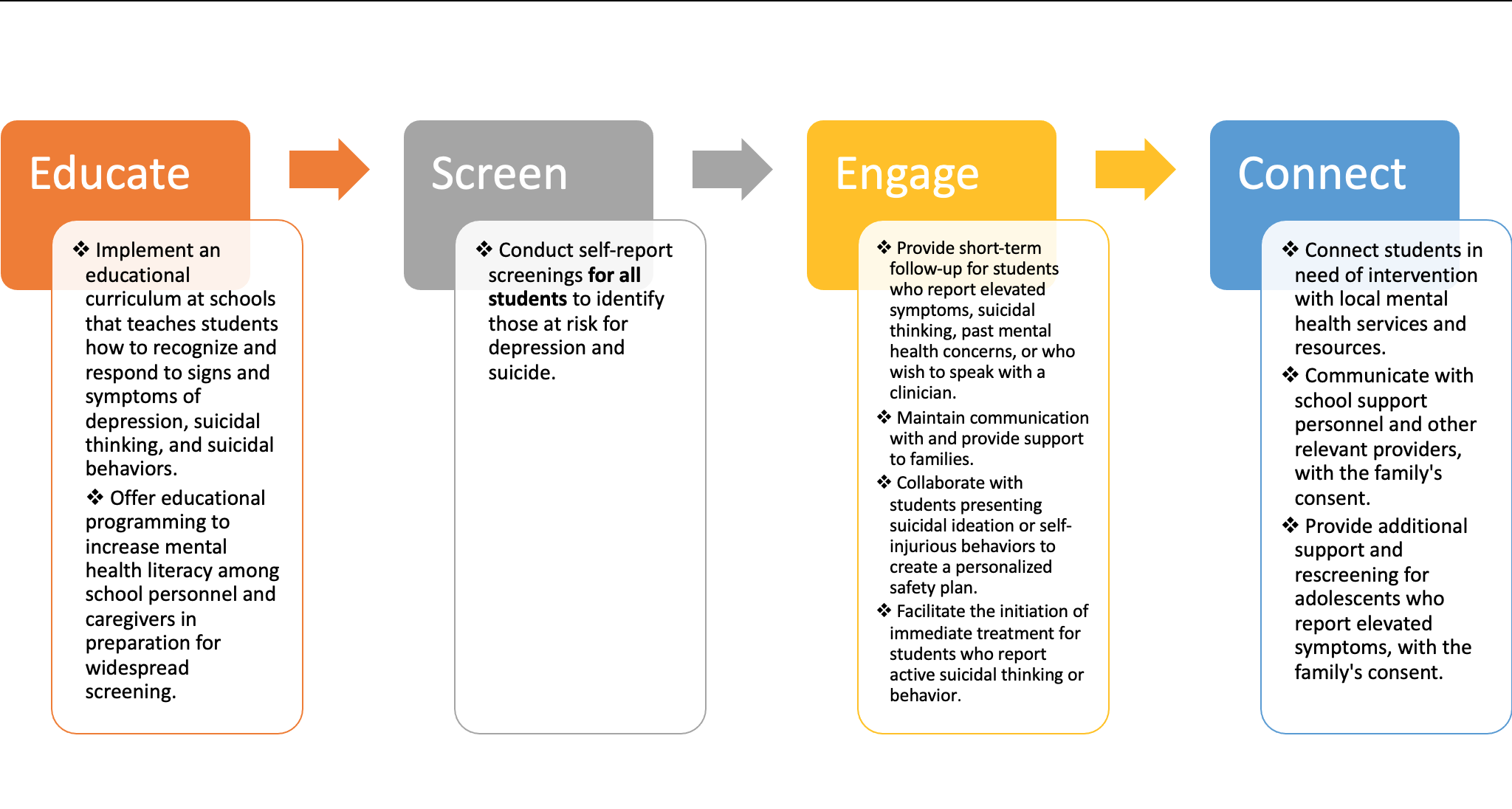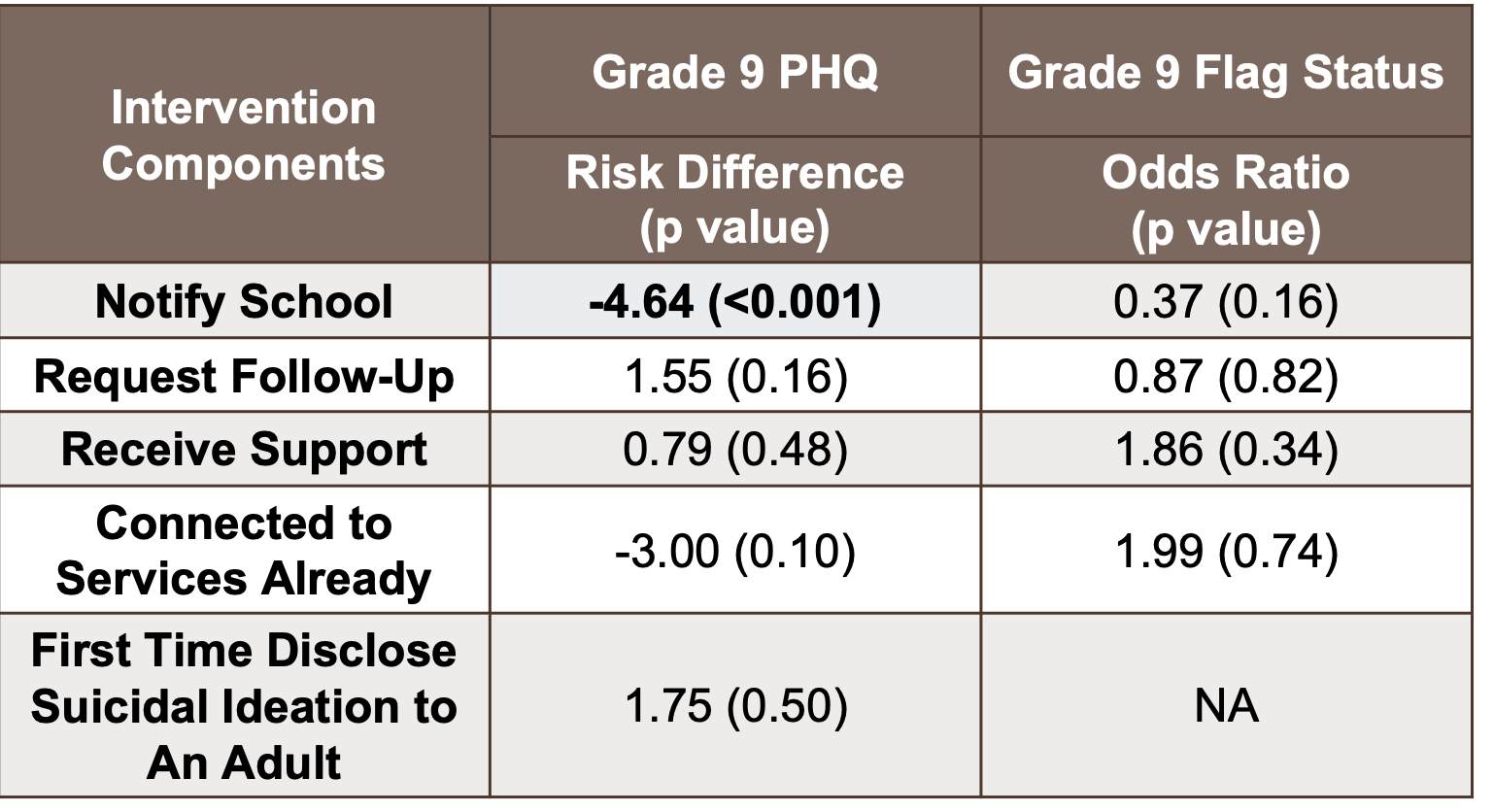Mental Health 1
Session: Mental Health 1
756 - Evaluating the Effectiveness of Mood Check Interventions in Improving Adolescent Depression and Suicide Outcomes: A Pilot Analysis
Saturday, April 26, 2025
2:30pm - 4:45pm HST
Publication Number: 756.4789
Peiting Zhao, Brown University School of Public Health, Providence, RI, United States; Tracy Gladstone, Brown University, Providence, RI, United States

Peiting Zhao, B.A. in Economics, MPH (in progress)
MPH Candidate in Epidemiology
Brown University School of Public Health
Providence, Rhode Island, United States
Presenting Author(s)
Background: This pilot study evaluated Mood Check, a school-based mental health program providing education, universal screening, and brief intervention for adolescents.
Objective: We assessed the prevalence of being flagged for risk of depression and/or suicide from grade 7 to grade 9 and examined associations between each intervention component and grade 9 depression outcomes.
Design/Methods: Data from 343 adolescents (ages 12–18) from the Class of 2023 in two northeastern U.S. school districts were analyzed. Participants were screened for depression in grade 7 and again in grade 9 using the 9-item Patient Health Questionnaire for Adolescents (PHQ-A), with “flagged” status indicating elevated risk. Among students who were flagged in grade 7, binary indicators of intervention components were assessed in grade 7 (allowing screening results to be shared with the school, engaging in 3-month follow-up, connecting students to appropriate support) and in grade 9 (confirming student had been connected to services, confirming that student disclosed suicidal ideation to an adult for the first time). Linear and exact logistic regression models were employed to evaluate associations between grade 7 flag status and grade 9 PHQ score, and between each intervention component and grade 9 PHQ score and flag status, adjusting for demographics and baseline PHQ scores. All analyses were conducted in R V4.3.1.
Results: Overall, 54% participants were female and 73% were White. Prevalence of flag was 20% (n=70) in grade 7 and 27% (n=93) in grade 9, with 45% (n=31) of those flagged in grade 7 no longer flagged in grade 9. Adolescents flagged in grade 7 had on average 0.22 units higher (p=0.73) PHQ score in grade 9, compared to those not flagged in grade 7. Notifying school of students' mental health concerns following screening in grade 7 is associated with 4.64 units lower average grade 9 PHQ score (p < 0.001) and a 63% reduction in grade 9 flag odds (aOR=0.37, p=0.16).
Conclusion(s): Nearly half of adolescents flagged in grade 7 were no longer flagged in grade 9. School notification of mental health concerns significantly improved adolescent symptoms of depression, supporting Mood Check’s positive impact on adolescent mental health.
Figure 1. Workflow of Mood Check Program
 This flow chart illustrates the four major steps of the Mood Check program and actions under each step.
This flow chart illustrates the four major steps of the Mood Check program and actions under each step.Table 1. Adjusted Association between Study Variables and Grade 9 PHQ Score
.png) This table presents the adjusted associations between each study variable and the Grade 9 PHQ score, based on results from a multivariate linear regression analysis.
This table presents the adjusted associations between each study variable and the Grade 9 PHQ score, based on results from a multivariate linear regression analysis.Table 2. Relationship between Intervention Components and Grade 9 Depression Outcomes
 This table shows the adjusted associations between each Mood Check intervention component and two Grade 9 depression outcomes: average PHQ score (from multivariate linear regression) and flag status (from exact logistic regression).
This table shows the adjusted associations between each Mood Check intervention component and two Grade 9 depression outcomes: average PHQ score (from multivariate linear regression) and flag status (from exact logistic regression).
